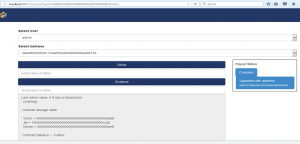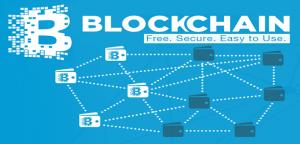Tag Archives: blockchain
Hyperledger Network Certificates & How to Create Them
This blog represents code samples and related concepts on how to create hyperledger network certificates. These certificates will be used by peer nodes in Hyperledger Blockchain network. Crypto Config file for Generating Hyperledger Network Certificates Following is a YAML configuration file which can be used to create certificates for different network entities in the blockchain network. You can save the file with name such as crypto-config.yaml Pay attention to some of the following in above file: There are two high-level entries for organizations managing orderer node and peer nodes. They are OrdererOrgs and PeerOrgs Each org would be defined with attributes such as name, domain, specs, templates, users etc. Specs entry …
Hyperledger Fabric – Hello World with Blockchain Network
Hyperledger Fabric Hello World is about building your first blockchain network. We will make use of fabric-samples provided by Hyperledger. The first Blockchain network will be built using Docker containers. The first network will result in running containers representing some of the following: Two peer nodes each, representing two different organizations. Thus, one organization will have two peer nodes, one of which is called an anchor node and is used to ensure availability. For two organization, there will be four nodes. One node representing Ordering service Management node to do some of the following activities: Join peers to a channel Deploy and instantiate chain code Drive execution of transactions against deployed …
Blockchain – Top Links for ICO
Following are some of top links representing the pages which provides good information on ICO (Initial Coin Offering): What is ICO? List of upcoming ICOs, token sales, past ICOs etc – ICOAlert.com Up-to-date news on ICO – Cointelegraph.com ICO Tracker from Coindesk.com Ultimate list of ICO resources from Coindesk.com
Blockchain Developers Interview Questions – Set 1
This page covers interview questions for Blockchain developers. It covers some of the following concepts in relation with Bitcoin Blockchain: Blockchain fundamentals Block related concepts [wp_quiz id=”5361″]
Decentralized Identity Management, Blockchain – Why Bother
This blog represents details on Decentralized Identity Management and why you should care? Given that IBM, Hyperledger has joined Blockchain Identity Consortium makes it much more important to quickly go over the concepts related with decentralized identity management. Check out a related Hyperledger project, Project Indy, on supporting independent identity on distributed ledgers. Traditional Centralized or Federated Identity Management System Conventional identity management systems have always been based on centralized authorities such as corporate directory services , certificate authorities (CA) , or domain name registries. Each of these centralized identity management systems acted as a “root of trust”. In order to have the identity management work across different systems, there is something called as federated identity management. According to Wikipedia post of …
Blockchain – Hyperledger Technology Architecture Viewpoint
The diagram below represents technology architecture viewpoint of hyperledger blockchain framework: Hyperledger framework comprises of four key services/modules at a broader level. They are following: Membership services. Membership services comprise of components such as following: Registration: Registers/enrolls the new users Identity management: Manages identity of the users Audit management Blockchain services: Blockchain services comprise of following components used to manage consensus, storage and transactions: Consensus Manager: Used to implement consensus algorithm; Allows to plug-in extensible/customized consensus module. Consensus manager forms part of ordering service which validates the transaction using VSCC (validation system chaincode), create block of transaction and send them back to peer nodes. Distributed Ledger Ledger storage: Storage such as LevelDB or CouchDB can …
Quick Glance at Hyperledger Fabric Architecture Building Blocks
The diagram below represents application communication viewpoint at key building blocks of Hyperledger Fabric 1.0 architecture: Following are some of the key building blocks of Hyperledger Fabric 1.0 Architecture: Membership Services Provider: Enrolls the clients Peers: Peer nodes can be endorser (endorse proposal for transaction)and committer nodes (write block of transactions to ledger) Chaincode: Smart contract written in Java/Go which is invoked by a transaction. Peer nodes having chaincode becomes the endorser for that chaincode. ESCC (Endorser system chain code) executes the chaincode using proposal and read-write set information. Ledger: Ledger which holds the copy of transactions in form of blocks Ordering service: Consenter service which validates the transaction using VSCC (Validation system chaincode), orders …
Blockchain usecases from Financial Services & Government/Legal/Regulatory
This blog represents some of the Blockchain uses cases in industry domain related with financial services and Government/Legal/Regulatory. The blockchain is getting talked about/implemented in different industry domains such as following: Financial services Government / legal / regulatory Government / legal / identity management Capital markets Healthcare / medical IOT Publishing Supply chain / Logistics Supply chain / Traceability / Anti-counterfeiting Supply chain / Interoperability / Visibility Travel / Hospitality Agriculture I shall be doing a blog series discussing all of the above use cases in detail. In this blog, we will look into some of the use cases in financial services and Government/legal/regulatory. Financial Services Microlending: Small unsecured loans issued …
Blockchain – Top 5 Cool Links for Hyperledger Framework
Following are some of the cool links in relation with Hyperledger framework (Open-source permissioned blockchain framework) you would want to bookmark. These pages represent help docs, use cases, step-by-step instructions to create the first blockchain, issues etc. Hyperledger Mailing List Hyperledger Jira Hyperledger Fabric Docs Step-by-step process of bootstrapping Hyperledger fabric network and invoking a transaction Hyperledger use cases
Blockchain – Transaction Journey into A Hyperledger Blockchain Network
This blog represents details on key types of components or building blocks of Hyperledger Blockchain Network and discusses details on the journey of transaction in the blockchain network. It also highlights the steps including diagrams on workflow/process flow related with endorse and commit transactions. Types of Hyperledger Components There are three types of components, each of them performing different functions, in Hyperledger. Node joining the Hyperledger Blockchain network will be free to take up one or more functions. Following represents these three classes of components: Endorsers: Nodes with “Endorser” functionality will simulate and sign or reject the transactions. A peer can be potentially an endorser for the chaincodes deployed to …
Ethereum Installation Issue – Missing MSVCR120.dll
This blog represents tips to fix the “missing MSVCR120.dll from your computer” when one tries to start the just installed Ethereum MIX IDE from this page. All that one requires to do is download and install Visual C++ redistributable packages for Visual Studio 2013 from this link: https://www.microsoft.com/en-us/download/details.aspx?id=40784 and you should be all set. After installation, try starting MIX by clicking on AlethZero and you should be all set.
Blockchain – Ethereum Hello World with Visual Studio

This article represents tips on how to get started with Ethereum Hello World program with Visual Studio. Please feel free to comment/suggest if I missed to mention one or more important points. Also, sorry for the typos. Following are the key steps: Download Visual Studio community version from Visual Studio Download page. This is a very small file. However, once you click on this file, it starts downloading and installing the Visual Studio IDE which is 8 GB large file. So, have patience. Once completed, it will be installed. Start the Visual studio. For the first time, it takes considerable file to start. So, have patience. Download the extension from …
10 Definitions to Understand BlockChain Better
This article represents 10 definitions of BlockChain that I gathered from several pages. The idea is to understand BlockChain in different words. Please feel free to comment/suggest if I missed to mention one or more important points. Also, sorry for the typos. Following are the 10 definitions of BlockChain: The block chain consists of blocks that hold timestamped batches of recent valid transactions. Each block includes the hash of the prior block, linking the blocks together. The linked blocks form a chain, with each additional block reinforcing those before it, thus giving the database type its name. The original definition was written by Satoshi Nakamoto and found in the original …
Top 6 BlockChain Peer-to-Peer Digital Currency
This article represents top 6 peer-to-peer digital currency which is based on BlockChain technology. In case, you quickly wanted to understand what is BlockChain, do check my other article, Hello BlockChain – Glad You Arrived in IT World. Please feel free to comment/suggest if I missed to mention one or more important points. Also, sorry for the typos. Bitcoin remaining the most popular one, following is a list of other four peer-to-peer digital currencies: BitCoin (https://blockchain.info/): Goes without saying, it is the most popular P2P digital currency. It is BitCoin which started BlockChain platform. Ethereum (https://www.ethereum.org/): Built on the BlockChain technology, Ethereum is seen as the rival to BitCoin. Most recently, it …
Hello BlockChain – Glad You Arrived in IT World

This article represents a very high level concept around what is BlockChain Technology. From the time I have latched on to this technology, trust me, I am glad I am investing my time into it. Whether it will live up to hype or not is something I do not care about. What I care is the cool manner it accomplishes transactions in decentralized manner thereby removing the need for third-party centralized system. Its truly amazing and fascinating technology. Please feel free to comment/suggest if I missed to mention one or more important points. Also, sorry for the typos. Following are the key points described later in this article: What is …
I found it very helpful. However the differences are not too understandable for me